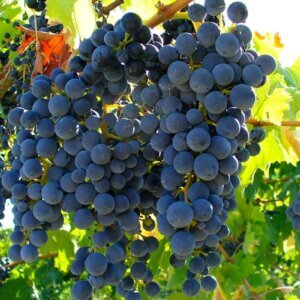Planting trees can help the environment, and your wallet. Agro-farming methods incorporate trees into the homestead landscape. In turn, the trees provide food and shelter for wildlife, and help control erosion. Additionally, the methods serve as a windbreak and offer shade and shelter to people, plants, and animals.

From a homesteading standpoint, agro-farming helps to define property boundaries, retain soil moisture, and provide a sustainable, income-producing environment for the homesteader.
If you are searching for a way to produce a bit of supplemental income, growing trees for profit is an excellent side business. It is a relatively easy way to generate a reliable income working a few hours a week.
Growing trees is a win-win because you can do it on your schedule, and it gives you the opportunity to have multiple streams of income.
Starting Your Tree Business
Minimal Space Required
Trees represent a profitable and renewable resource and can be grown in an urban backyard or small rural acreage that has minimal space available. Additionally, trees are not a seasonal crop like vegetables or flowers, making them a versatile supplemental income when sold.

When you raise vegetables or flowers, you have to either harvest and sell your crop, or lose it. Trees will continue to grow, and if you don’t sell all the trees you take to market, they will just grow larger and be worth more money later. In fact, one of the best motivations for growing homestead trees is that the value of trees increases annually.
No Previous Experience Required
Growing trees doesn’t require a college degree, and you can start your tree growing business with a minimum investment of a few hundred dollars, a bit of common sense, and the willingness to learn as you go.

Additionally, growing trees in the backyard requires little work. You can water and maintain trees for just a couple of hours per week. Many home growers report that they enjoy the financial security of having their own plant business, even if they have other sources of “outside” income.
The initial investment is minimal, the time invested is pleasurable, and the rewards are substantial. If you elect to turn your part-time tree growing business into a full-time vocation, your income can grow as fast as your trees.
Choosing High-Value Trees
The very best way to ensure the success of your homestead tree growing business is to cultivate “high-value” trees. Royal Parks Foundation emphasizes the importance of trees in the environment, advising, “Trees are vital. As the biggest plants on the planet, they give us oxygen, store carbon, stabilise the soil and give life to the world’s wildlife. They also provide us with the materials for tools and shelter.”
Fruit Trees
There is a huge consumer demand for dwarf “backyard” fruit trees that can add flowers, color to the landscape, and produce a crop for homeowners. Newly developed dwarf fruit trees can produce three to five times the harvest of traditional fruit trees in less than half the space.
The diminutive size of dwarf fruit trees makes them much easier to grow, prune, and harvest than traditional fruit trees. Thanks to the research and development of growers, varieties are now available that will produce an abundant crop in as little as 3-5 growing seasons.
Fruit trees are also incredibly diverse! You can choose from a variety of stone fruits such as apple, peach, pear, apricot, cherry, pear, nectarine, avocado, pomegranate, banana, or plum trees. If you live in a temperate climate, consider dwarf citrus trees such as orange, lime, lemon, or grapefruit trees.
Many hybrid varieties can tolerate cooler temperatures, but most citrus trees grow best in United States Plant Hardiness Zones seven and above.
Grown in five-gallon containers, dwarf fruit trees take up little space, can be moved easily, and produce fruit for the homestead that can be sold at the market once they grow to a large enough size.
Nut Trees
Did you know that a well-managed five-acre plot of mature nut trees can provide a full-time income? Using newly developed permaculture techniques, homesteaders practicing agroforestry create a plot by first planting a natural forest, with the taller trees such as chestnut and walnut serving as the upper canopy.
The more shade-tolerant shorter trees, such as filberts, serve as the lower canopy.
You will have a bountiful harvest of nutritious nuts for family consumption or to sell at the fresh market for decades. When nut trees reach maturity, you can selectively harvest them for their high-value timber.
Landscape Trees
There is a lively market for landscape trees. Dwarf landscape trees sell quickly, and those that the grower finds especially vigorous often find a permanent place in the grower’s homestead. These growers keep the finest healthy specimens and sell the rest for profit.
Landscape trees define property boundaries and provide a windbreak from cold north winds. These type of trees also offer shade, shelter, and a habitat for wildlife.
There are hundreds of different species of landscape trees that are easy to grow for profit. Did you know that you can easily grow up to 3,500 tiny potted trees on a small acreage homestead?
Experiment to find the ones that work best in your climate zone and growing conditions. Here are just a few of the many landscape trees that are available:
- Leyland Cypress – Valued for thick green foliage and ease of care, this hardy tree flourishes in United Plant Hardiness Zones six through ten and grows from three-to-five feet per year.
- Japanese Maple – Highly prized for their unusual shape and brilliant fall foliage, Japanese Maple (Acer paimatum), is a dwarf landscape tree that is easy to grow in United States Plant Hardiness Zones 3 through 8. This colorful landscape gem grows as much as two feet per year.
- Thuja Green Giant – Growing three-to-five feet a year, this hardy landscape tree takes up little room and is good in United States Plant Hardiness zones three through nine.
Bonsai Trees
Cultivated for centuries, Bonsai trees are one of the easiest and most satisfying trees for homesteaders to cultivate. Because they are small, many no bigger than the palm of your hand, they require little space and can be easily grown on the patio or in a greenhouse.
Another benefit is that Bonsai trees sell well year around. Although any tree can be pruned and shaped to be a Bonsai tree, most growers have the best luck with hardy evergreens.
If you have patience, many Bonsai trees can be started from wild harvested seeds.
Final Thoughts
Long-Term Investment
Jay Hayek, University of Illinois Extension Specialist advises, “If you are going to plant one acre of black walnut as a future investment, I would probably plant at least 436 trees per acre: plant one tree every ten feet within your tree rows, with ten feet between tree rows (i.e., 43,560 square feet per acre divided by 10×10 spacing yields 436 trees per acre).”
Profits In Potted Trees
New tree growers who need to turn a profit right away should look at container growing, a system used by many commercial nurseries.
Profitable Plant Digest suggests, “Growing trees for sale in pots, whether they are heirloom fruit trees or tiny trees for bonsai collectors, is easier, faster, more profitable and produces high quality trees.”
More Than Monetary Rewards
Trees are essential to our life experience, sequestering carbon dioxide and producing oxygen.
Do your part to protect the planet while beautifying your homestead growing trees for a profit.
Related Post: Introduction to Agroforestry: What It Is and How to Successfully Implement It on Your Homestead
References:
- Economic Benefits Of Trees, New York State Department of Environmental Conservation
- Planting An Acre Of Black Walnut Trees (IL), University of Illinois Extension
- Nine Tree Care Tips And Techniques, National Arbor Day Foundation
- Ten Most Profitable Trees To Grow, Profitable Plants Digest
- The Value Of Trees, Robert Emmet Jones, Kimberly L. Davis, John Bradford
- Top 22 Benefits Of Trees, Tree People
- United States Plant Hardiness Zones, United States Department of Agriculture
- Why Are Trees So Important?, The Regent’s Park










































Growing trees not only can protect our environment, but also bring economic benefit. You can plant apple tray, peach tree and so on.
Yes, me and my ancestors doing this for years. But get some new idea from your post. It not only protects the environment, creates firewood, wood for furniture and a hidden source of money.
Have you actually done this, or talked to someone who does? “Dwarf fruit trees” — nearly all backyard fruit trees, in fact — are grafted, not grown from seed. Most fruit varieties have to be propagated from an existing tree of that variety, or the fruit will be different; furthermore, dwarf forms have their diminutive size because of the rootstock they’re grown on, not because of the genetics of the variety itself. That’s not an endeavor for someone inexperienced in horticulture. Where do you source trees, supplies, seeds, etc. if you want to do this kind of thing?